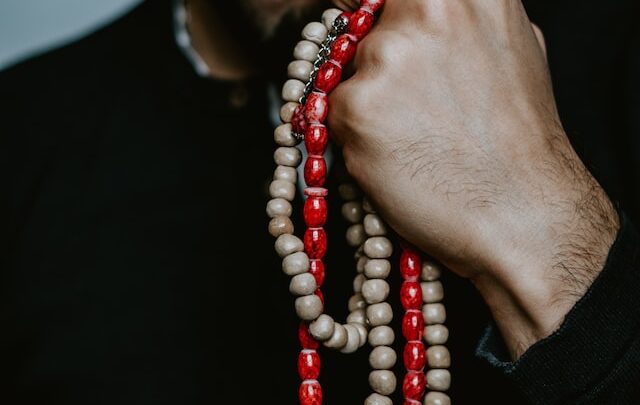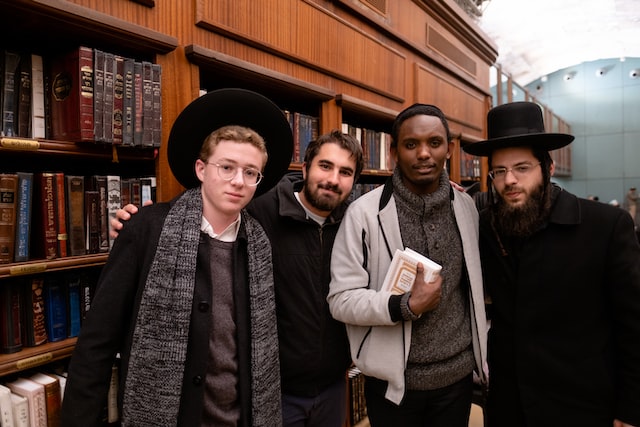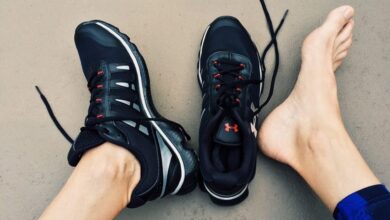
The sub-Saharan African Diaspora black Jews in Israel is made up of four main groups:
1) Ethiopian immigrants, most of whom are from the Ethiopian Jewish community, the Beta Israel, but also a significant number of descendants of Christian Ethiopians with Jewish ancestry, called the Falas Mura;
2) African migrant workers and refugees;
3) Black Bedouin;
4) African-American “Black Hebrews,” who call themselves the African Hebrew Israelites.
Each group is made up of a different ethnic, religious, and social group, and they don’t talk to each other much. These groups, which are mostly black in a mostly white but multi-ethnic country, show how complicated and multi-faceted Israeli society is.
They also show how much the public talks about the limits of Judaism and Israeli citizenship.
Also Read: How Africans Were Lured into the First Slave Ship’ Jesus of Lubeck
Ethiopian immigrants from the first and second generation of Black Jews in Isreal

The 125,000 Ethiopian immigrants from the first and second generation make up the largest group of people from sub-Saharan Africa in Israel.
Since the 1980s, 80,000 Ethiopian immigrants have come to Israel in several waves, including two huge airlifts.
Between November 1984 and January 1985, 6,700 immigrants were brought from refugee camps in Sudan, where they had gathered after sneaking across the Ethiopian-Sudanese border on foot.
In May 1990, nearly 14,000 immigrants were brought from Addis Ababa within 36 hours.
Most of the people who moved to Israel before 1991 were from the Jewish Beta Israel community, which in Ethiopia was called Falasha in a derogatory way.
Most of the 35,000 Ethiopian immigrants who have come since 1991, though, are Falas Mura, who are Ethiopians with Jewish roots who became Christians in the 19th and early 20th centuries.
Also Read: Antonianism: The Catholic Church That Depicts Jesus Christ as a Black Man
Beta Israel
At first, the Beta Israel were welcomed with open arms into Israel, which had five million people living there in 1990. Over time, both religious and cultural differences made people less happy.
Since the Beta Israel community was cut off from mainstream Judaism for hundreds of years, they kept a version of Jewish observance that was only based on the Bible.
This became very different from Orthodox or mainstream Judaism, which grew in Europe, Asia, and North Africa.
Even though the Israeli Rabbinate, Israel’s Orthodox state religion, officially recognized Beta Israel as Jewish in 1975, it raised questions about the religious status of the individual immigrants and required that most of them go through a symbolic conversion in Israel.
Most of Beta Israel didn’t like this demand because they thought it was embarrassing and racist.
This anger led to a month-long sit-in protest in 1985, which was supported by a lot of Israelis and forced the Rabbinate to back down from its demand.
Most Orthodox rabbis, on the other hand, still won’t marry Ethiopian Israelis or record their marriages.
Also Read: Who is the Prophet Muhammad?
Clashes with Israeli Authories
In the 1990s, the religious establishment refused to recognize the authority of the Beta Israel’s respected religious leaders, the Qessotch (Kessim), to perform life-cycle ceremonies.
This made things worse between the Ethiopian community and the government.
Younger immigrants and their Israeli-born children were getting more and more angry because they were being treated unfairly and called racist names.
In January 1996, for example, a story in the Haaretz newspaper about the national blood-bank policy showed that for more than a decade, all blood donations from Ethiopians were routinely thrown away because so many of them had AIDS.
This policy showed many Ethiopian immigrants that they were not welcome in Israeli society, which led to a violent protest in Jerusalem by 10,000 young men and women.
Even though this was the biggest protest in the short history of the Ethiopian immigrant community, it didn’t change Israeli policy.
However, it was a turning point for the community, bringing out a young, outspoken leadership and giving rise to many community groups.
Also Read: The 42 Laws of Maat in Kemet’ (The Original 10 Commandments of the Bible)
Public View and Economic Issues

Even though there were more and more organizations and Ethiopians were becoming more and more visible in Israeli public life, most immigrant families tried to find a quiet middle ground between their community heritage, their experiences with Orthodox Judaism, and the modern secularized culture of the majority.
If the older generation kept focusing on its religious identity, most of the younger generation would see itself as both Israeli and part of a worldwide black diaspora.
They show this by dressing like young black people in cities in the United States and listening to Rap and Reggae music.
In the public eye, cultural and religious issues have been the most important. However, since the 1980s, economic issues have been the most important for Ethiopian households in Israel.
Ethiopian immigrants and their families are still some of the poorest people in Israel. They have high unemployment rates and depend on welfare.
Ethiopian immigrants came from rural areas where they worked as subsistence farmers and craftspeople. When they got to Israel, they didn’t have the education or money to work in a modern, Western economy.
Their slow integration into the Israeli workforce is made worse by the fact that most of them live in small towns and poor neighborhoods, even though the government is trying to stop this.
Also Read: The Ethiopian Bible is the Original Bible and the Best Bible Version
2nd Generation Israeli Ethiopians
Israeli Ethiopians from the second generation are much more educated than their parents were. They go to college in large numbers and get jobs at about the same rate as the rest of the population.
Many have started their own businesses that serve the Israeli-Ethiopian community and trade goods with Ethiopia.
Even though there is an affirmative action policy at universities across the country, their overall educational achievements and participation in higher education are still lower than those of their peers in the general population.
Ethiopians with college degrees still have a harder time than their peers finding jobs in their field that match their level of education.
Even though there are many problems, like racism, most people in the community have a strong sense of belonging to the Jewish people and to Israel.
Their strong desire to become part of Jewish-Israeli society is shown by how many young men join the military, which is one of the most important signs of being part of Israeli society.
Another sign is the fact that the community has protested in a way that has never been seen before to ask to be treated as equal Jews in the Jewish state.
Also Read: Why Ethiopians Celebrate Christmas on January 7
The Second Migration of Africans into Isreal: African migrant workers and refugees
The second largest group of people from sub-Saharan Africa in Israel are African workers and refugees. The number of people from each country in this group has changed over time.
This is because there have been different waves of African migration and Israel’s immigration policies have changed.
Since 1990, there have been two main ways for Africans to get into Israel.
During the 1990s and early 2000s, most migrants, mostly from Nigeria and Ghana, came to the United States on tourist visas and stayed to work without papers.
Since 2005, a growing number of refugees and migrant workers, mostly from Darfur and South Sudan, Eritrea, and Ethiopia, have sneaked into Israel through the border with Egypt, often after walking through the Sinai Desert and sometimes getting hurt by local Bedouin.
The first wave was a clear part of the global movement of workers from the Third World to more developed countries in the West.
This movement picked up speed in Israel when Palestinian workers were banned from entering the country in the late 1980s.
People who had to leave their homes in Africa because of civil war and genocide were a big part of the second wave.
Also Read: Where is Ark of the Covenant & What is in the Ark of the Covenant
The First Group of African Immigrants into Isreal
The first group of African immigrants was mostly well-educated men and women who worked as menial laborers in Israel to raise their incomes but not their social status.
By the end of the 1990s, most of this African community lived in poor areas of southern Tel Aviv. They had grown into a community of about 12,000 people, some of whom lived in secret.
The community set up more than 30 churches and a network of cheap childcare centers.
With the help of influential Israelis, they were also able to set up The African Workers’ Union, the first legal NGO of undocumented migrants in Israel.
The churches, which were mostly Evangelical and Pentecostal, helped the migrants make friends, gave them advice, and helped them out.
They also helped the African Christians feel like they were on a special trip to the Holy Land.
In the spring of 2002, the Israeli government changed its policy toward undocumented migrants from one of de facto tolerance to one of strict deportation.
By the beginning of 2004, there were only about 3,000 Africans left, and most of them were women and children.
As the community fell apart, most churches closed and the African Workers’ Union fell apart.
Also Read: Black Kings And Black Queens Who Ruled Parts of Europe For Almost 700 Years
The Second Group of African Immigrants into Isreal

As the first group of Africans left, a small number of the second group, who were mostly political refugees and asylum seekers, began to arrive.
This stream grew a lot in 2006, when Egypt changed its policy toward refugees and made it harder for them to stay there.
As a result, many of them crossed the border into Israel. As of the summer of 2011, there were about 35,000 African refugees and people looking for asylum in Israel.
Nearly every day, new people came in from Egypt. They gather in southern Tel Aviv, the resort town of Eilat on the Red Sea, and Jerusalem, where Ethiopians go to get help from the Ethiopian Church, which is recognized by the government and owns property in the city.
Even though the Israeli government is against this influx of refugees and says that most of them are just migrant workers, it has treated these men, women, and children in different ways.
At first, the refugees, who were mostly from Darfur, were moved from the border to big cities, where NGOs and private people helped them.
But as the number of people seeking asylum in Israel grew, the government tightened its rules. In some cases, refugees were sent back to Egypt.
Most newcomers, on the other hand, are locked up for a few months, or in some cases up to a few years. After that, they are let out to take care of themselves and ask for asylum with the UN High Commission for Refugees.
Since the number of the latest wave of African refugees has grown so quickly, its members are facing more and more hostility from locals who are angry about falling property values and rising crime rates in their neighborhoods.
This much bigger second-wave African community in Tel Aviv, on the other hand, has set up churches and community businesses and started a new NGO, the African Refugee Development Center, which is recognized by the government (ARDC).
Working with a number of Israeli groups and the Tel Aviv municipal government, the ARDC has helped provide temporary housing for newly arrived people, care for unaccompanied minors, basic health care for children, and advocacy and legal help.
The Black Bedouin
Black Bedouin are the descendants of African slaves that Bedouins, a semi-nomadic Arab group living in the Negev desert in southern Israel, bought.
There are about 180,000 Bedouins in Israel, and around 10,000 of them are black. Even though slavery has been illegal in Israel since the country was founded in 1948, the black Bedouins are still called abed, which is a derogatory word that means both slave and black.
In Bedouin society, abed is seen as the lowest social status. Many black Bedouins are part of the Abu Balal tribe, whose name sounds like the Prophet Mohammed’s Ethiopian friend Bilal.
All black Bedouins are Muslims, just like the rest of Bedouin society.
Even though no one knows where the black Bedouin came from, it is likely that their ancestors came from east Africa.
Most of the ancestors probably were bought as children in Egypt or Arabia in the late 1800s and early 1900s and brought to the Negev.
Slaves helped around the house, took care of animals, worked in the fields, and sometimes even fought as soldiers.
They were at the bottom of the tribal system of the highly hierarchical and paternalistic Bedouin people.
In fact, their status was lower than that of white slaves, who were lower than peasants (Falahim), who worked the fields of Samran, or “true” Bedouin, who owned land.
This social stratification was most obvious in the fact that black Bedouin could not marry white Bedouin, even if they were free.
So, black Bedouin slaves who were adults could only marry other black Bedouin slaves.
People still don’t like the idea of a black Bedouin marrying a “peasant” woman because it means that whites and blacks are marrying each other.
End to Slavery
Under the British Mandate over Palestine (1917–1948), slavery was against the law, but the government didn’t do much to enforce it.
In the early 1950s, the political and social changes caused by the 1948 war and the creation of the State of Israel finally put an end to slavery.
During the 1952 census, many black Bedouins showed their newfound freedom by registering as members of the Abu Balal tribe.
This tribe was led by Suleiman Abu Balal, the charismatic grandson of a slave who was made Sheikh by Israel.
In the 1970s, when the Israeli government started putting Bedouins in towns, most black Bedouins and landless peasants saw this as a chance to own their own land and helped the government.
About 6,000 black Bedouin live in three neighborhoods in the town of Rahat in the northern Negev, which is home to about 60% of the black Bedouin.
As part of the Bedouin population, which is Israel’s poorest and most excluded group, black Bedouins continue to have high unemployment rates and live in poverty.
African-American “Black Hebrews”/ African Hebrew
The only group of African American Jews to move to Israel as a group is the African-Hebrew Israelite Community. The group got together for the first time in 1963.
Most of them were from Chicago, Illinois, and Detroit, Michigan.
They think that black Americans are the real Jews because they are related to the Patriarchs and the Ten Lost Tribes who were sent to Africa.
Many people moved to Liberia in 1967 because they wanted to go “Back to Africa.”
They were led spiritually by a charismatic young man named Ben Carter, who went by the Hebrew name Ben Ammi Ben Israel, which means “son of my people, son of Israel.”
Members of the group, who were from both Liberia and the United States, started moving to Israel in 1969. They consider Israel to be part of Africa and their real home.
Settling in the small desert towns of Dimona, Mitzpé Ramon, and Arad, the group is now made up of about 2,500 people and is the smallest group in Israel with African roots.
Israel didn’t agree with them when they said they were Jewish, and they turned down offers to become Jewish. Even though some of the people in the group didn’t have papers, they insisted on staying in Israel.
In 1978, a number of people in the community gave up their American citizenship to avoid being deported. This made the situation worse.
Recognized as Permanent Residents
Long talks between the Israeli government, the community’s leaders, American-Jewish groups, and the U.S. State Department led to a compromise in 1990 that gave the group back their American citizenship and let them stay in Israel as temporary residents. So, they got work permits so they could make a living.
A community school that was built with money from the U.S. government was added to the state school system in 1997.
Since 2004, people in the community have been recognized as permanent residents and have full access to all social benefits from the government.
In 2006, the community was given land on the edge of Dimona, where they built Shomrei Ha-Shalom, an agricultural community for everyone (guardians of the peace).
Since 2009, people in the community have started to get Israeli citizenship, and high school graduates have started to join the Israeli Defense Force.
The community, which has a partially shared economy, makes money from the sale of organic soy products across the country, a line of hand-made eco-clothing that has become popular among African-American celebrities, and a famous choir and musical band that mostly performs abroad.
As supporters of an organic, vegan way of life, the community has gotten a lot of attention from all over the world, especially from African government officials.





